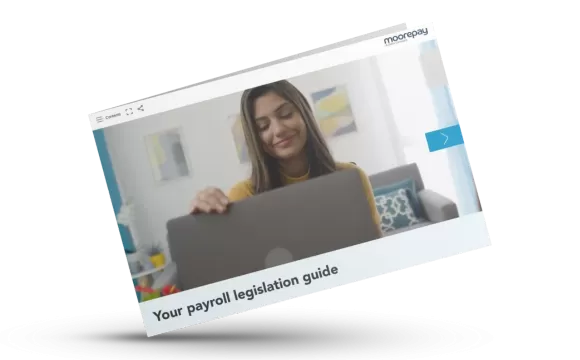Download your FREE tax fact card to find out the latest changes to payroll tax & legislation from April 2025.
This PDF card includes all the key payroll rates and dates that you can download and print off for your desk, or save to your desktop to keep it on-hand throughout the tax year.
What is the tax fact card?
Our tax fact card is an invaluable resource, providing payroll professionals with all the essential rates and allowances for the 2025/26 tax year. It includes details on income tax allowances, statutory payments, national insurance contributions, automatic enrolment, and much more.
What is the new tax year and why is it important?
The new tax year is a crucial period for payroll professionals, marking the start of updated rates, allowances, and key statutory changes. In the UK, the tax year runs from 6 April to 5 April the following year. This means that from 1 April 2025, new tax rates and payroll thresholds will take effect. Staying informed is essential to ensure compliance and accurate payroll processing.
Key tax year dates
When does the tax year start and end?
The UK tax year runs from 6 April to 5 April the following year. The 2025/26 tax year starts on 6 April 2025 and ends on 5 April 2026.
What is the difference between the tax year and the financial year?
Whereas the tax year starts on 6 April, the financial year for UK government accounting and company tax runs from 1 April 2025 to 31 March 2026.
The start of the financial year is the date that any new tax rates and rules typically come into effect. In this case, NLW and NMW increases on 1st April 2025, even though the tax year officially starts on Sunday 6th April. It is particularly important for companies paying corporation tax, as their accounting periods often align with the financial year.
When does the financial year start and end?
The financial or fiscal year runs from 1 April to 31 March 2025.
Key payroll dates for the 2025/26 tax year
Payroll professionals must be aware of key deadlines throughout the tax year to ensure compliance and avoid penalties. Some important dates include:
- 1 April 2025 – National Minimum Wage and National Living Wage rates increase.
- 6 April 2025 – Start of the new tax year and implementation of all other updated rates, including parental pay, PAYE tax and Class 1 National Insurance contributions, tax thresholds, rates and codes, and Class 1 National Insurance thresholds and rates.
- 19 April 2025 – Deadline for submitting final Full Payment Submission (FPS) for the previous tax year.
- 22 April 2025 – Deadline for employers to make final PAYE payments for 2024/25.
- 31 May 2025 – Deadline for issuing P60s to employees.
- 6 July 2025 – Deadline for submitting P11D forms and paying Class 1A National Insurance on benefits.
These are just a few examples – our tax fact card includes a full breakdown of key dates and deadlines to help payroll professionals stay ahead.
Tax FAQs
When is corporation tax due?
Corporation tax is typically due nine months and one day after the end of a company’s financial year. For example, if a company’s financial year ends on 31 March 2025, the corporation tax deadline would be 1 January 2026.
What is self assessment?
Self assessment is the system HMRC uses to collect income tax from individuals who do not have it automatically deducted from wages, pensions, or savings. It applies to self-employed individuals, landlords, and company directors, among others. The deadline for online self assessment tax returns is 31 January following the end of the tax year.
Get your tax fact card today
Keeping up with changing tax rates and payroll obligations can be challenging, but our tax fact card makes it easy. Download your copy today to stay informed and ensure seamless payroll processing throughout the 2025/26 tax year.




